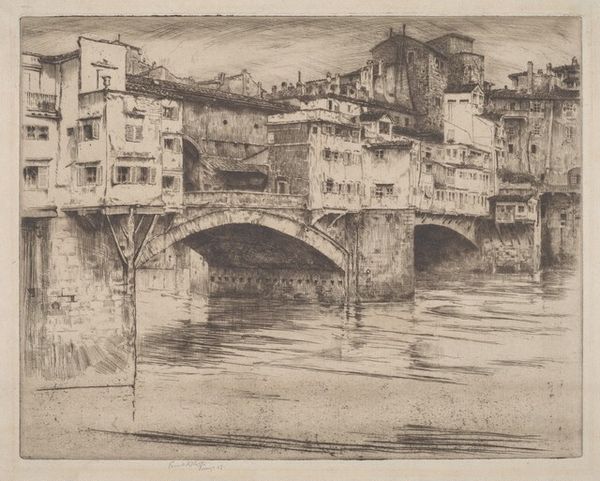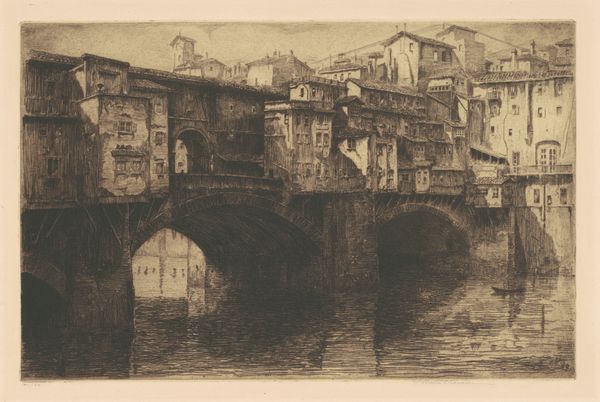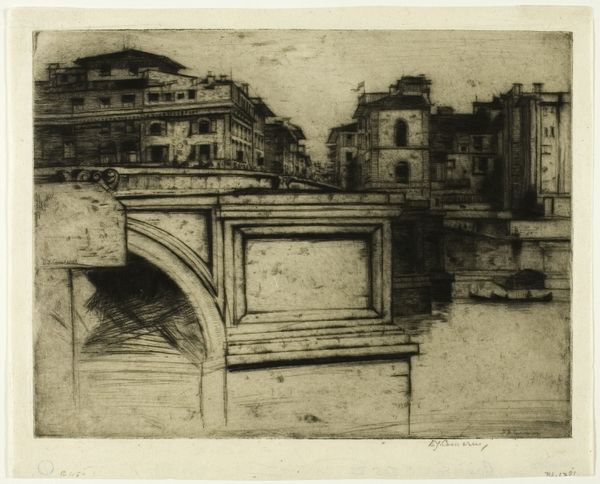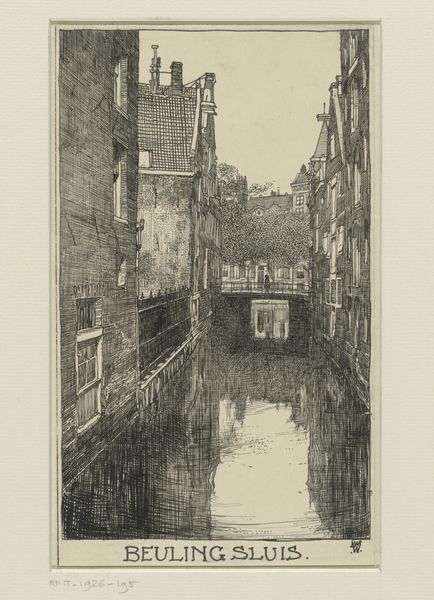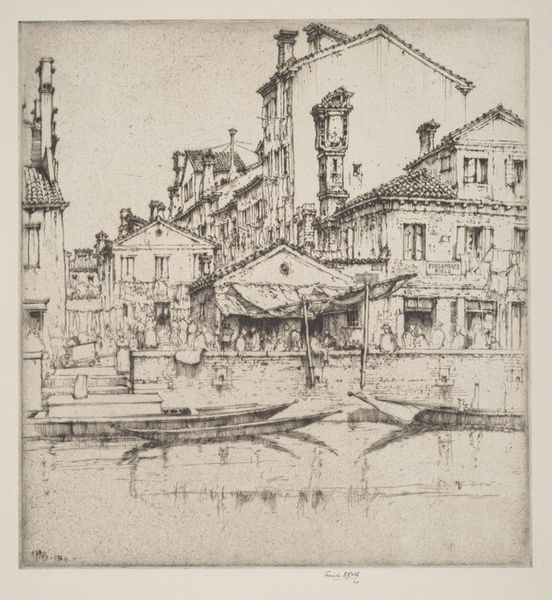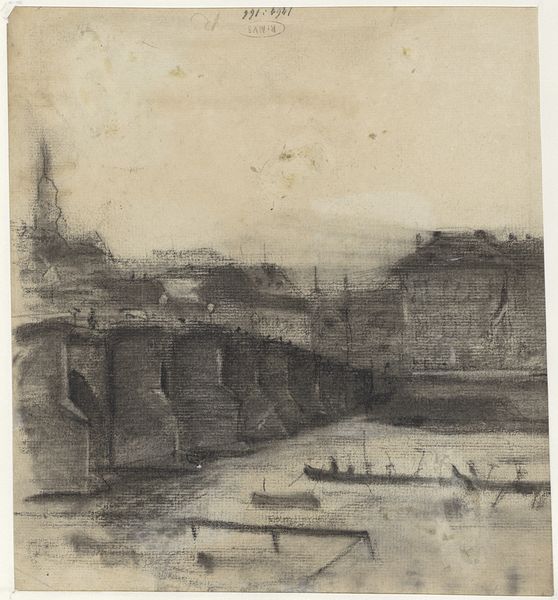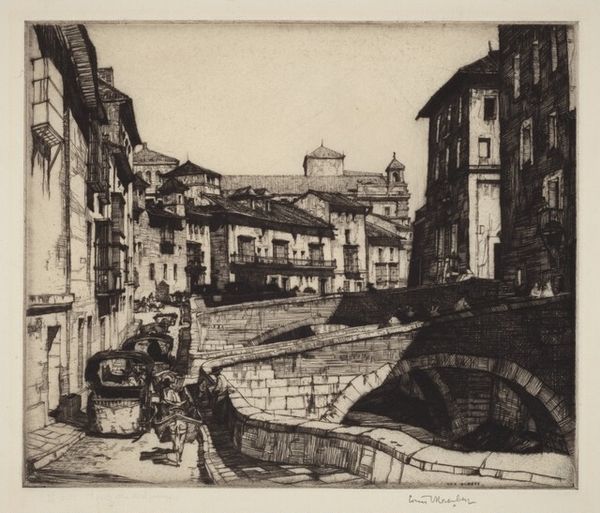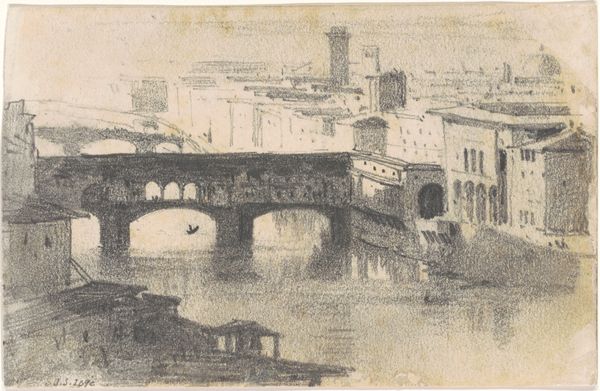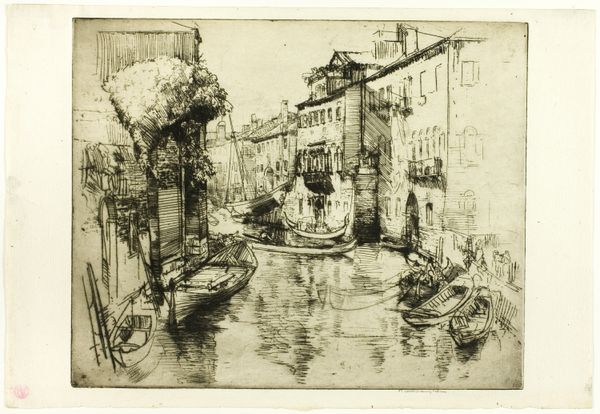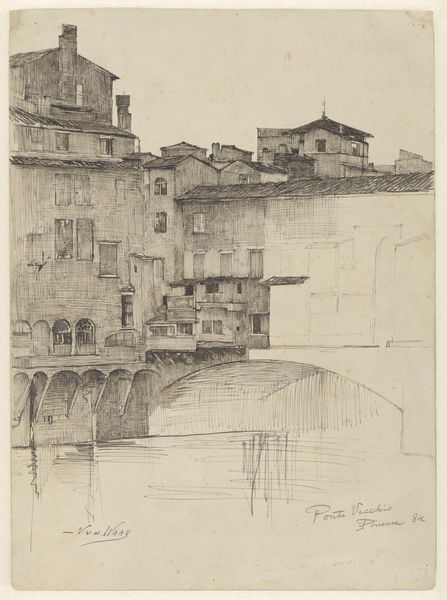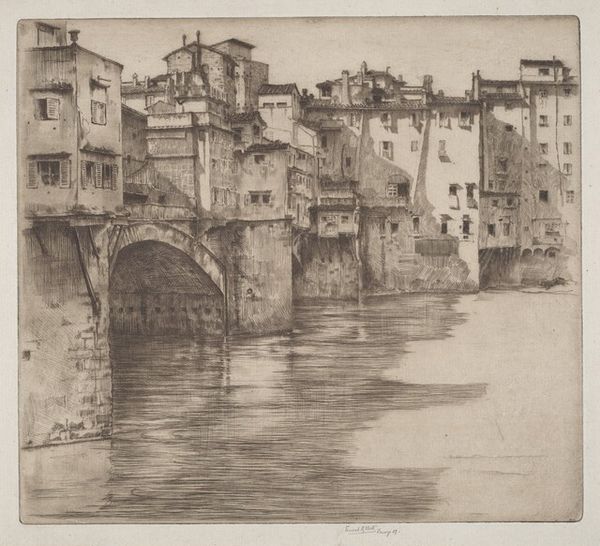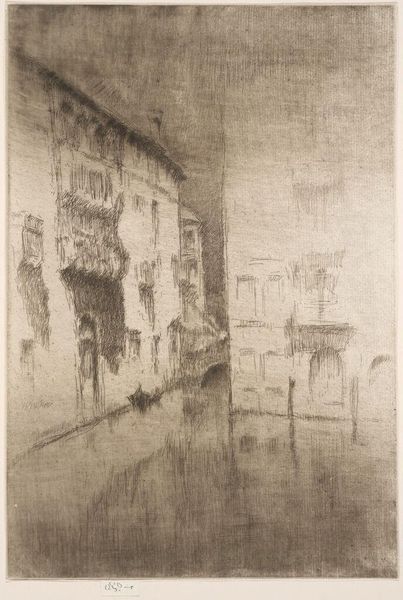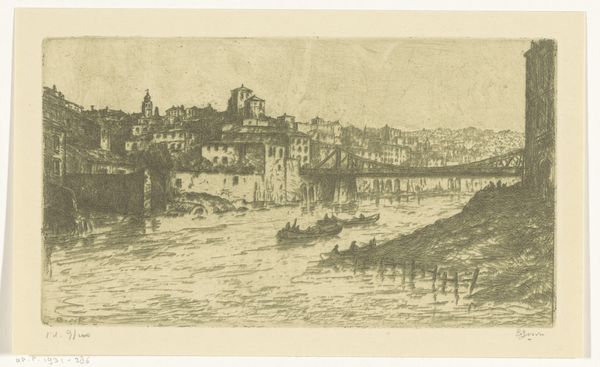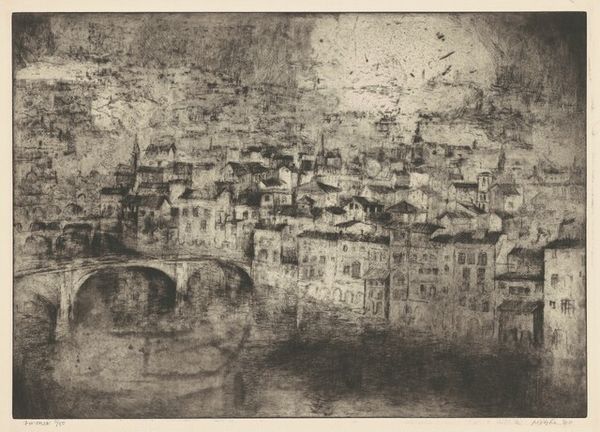
print, etching, engraving
# print
#
etching
#
cityscape
#
italian-renaissance
#
engraving
#
realism
Copyright: National Gallery of Art: CC0 1.0
Curator: Ernest D. Roth’s 1913 print, "Looking over the Ponte Vecchio", presents a view of the iconic bridge in Florence, rendered through etching and engraving. What are your first impressions of this piece? Editor: The detail is striking; you immediately notice the texture, and the image has a somewhat romantic feel to it, but with undertones of melancholy because it is so heavy on monochrome tones. The close proximity to the buildings and bridge creates a claustrophobic atmosphere and perhaps gives a sense of an artist’s awe, contemplating its presence. Curator: The artistic style is certainly informed by the long and complicated story of the Ponte Vecchio and the Italian Renaissance that flourished here. Roth isn't just depicting a structure; he's participating in a visual dialogue that dates back centuries. Consider, for example, the powerful guilds that once operated out of that bridge. It raises interesting questions about labor, urban development, and even artistic patronage. Editor: Absolutely, this piece engages with complex themes, specifically regarding urban space and access. It speaks to issues surrounding trade, craftsmanship, and the socioeconomic realities woven into the very fabric of Florence, then and now. Curator: The decision to focus on the buildings constructed upon the bridge really interests me. You get a very specific visual story about economy and commerce in the rapidly-expanding Florentine state through its control over the space. Editor: This viewpoint offers a glimpse into the living spaces and how the urban plan impacted people’s lives. How much, or how little, control they had over their work, their residence, and their day-to-day existence. The fact that there are multiple perspectives present allows the audience to feel more in tune with a range of individuals' feelings, not just one group's feelings. Curator: It makes one consider how the built environment can act as both a stage and a constraint, doesn’t it? The themes within are worth further contemplation! Editor: Yes, definitely. Considering this print through a socio-political lens brings many other perspectives into light.
Comments
No comments
Be the first to comment and join the conversation on the ultimate creative platform.
